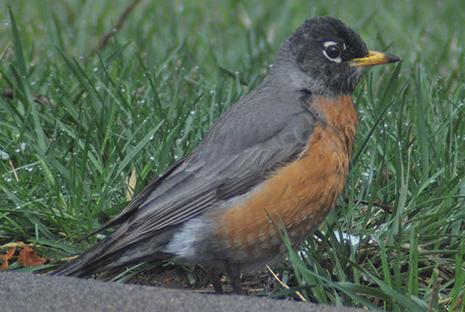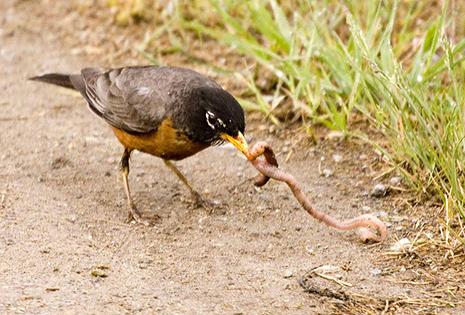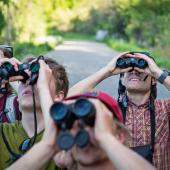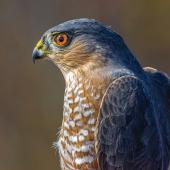Song of Spring
The season of the American robin.
Despite the predictably-unpredictable weather this time of year, spring is in fact, upon us. For me, one of the simple joys of the season is during early morning, when robin song often sifts in to my dreams. It is a lovely and humane means of greeting the day. Throughout their range, robins are frequently the first to begin singing before dawn and the last to stop in evening’s twilight. The American robin (Turdus migratorious) could be the most well-known and regularly observed native bird in the country. Robins were named early on by North American colonists who saw a resemblance to the European robin. However, the two birds are not closely related; ours are members of the thrush family and the European version is classed with the Old World chats and flycatchers. Both species do sport a rusty breast though, which accounts for the misplaced association long ago.
It would be difficult to find another bird more strongly associated with spring. The arrival of the first happy robins in our yards is always a welcome sight, but it may surprise you to know that most observed in Montana are actually year-round residents. In the warmer months, robins are aggressive and highly visible ground-foragers, but as winter approaches they will spend most of their time high in the trees. This behavior is so pronounced that many people assume the birds leave the region entirely. During winter, robins rely heavily on whatever berries are available for their survival and this means a lot more widespread foraging across the landscape. As soil temperatures warm, the insects and other invertebrates that robins thrive on become more available.
Part of the reason for the near universal distribution of American robins across the country is the American lawn. This ecologically simplified habitat is often well-watered, conveniently shorn, loaded with prey and incredibly ubiquitous. While “lawnscapes” can expose robins to predation by domestic cats as well as chemical hazards like fertilizer and herbicides, generally it has become a huge asset to the species. About forty percent of the bird’s diet is composed of invertebrates, which includes earthworms. Rarely, they have been observed killing and eating mammals like mice or the occasional small snake. While the peculiar “head-cocking” behavior robins demonstrate when hunting suggests they rely on hearing to locate prey, their keen vision seems to be the most reliable method. Though the bird is at home around our yards and communities, it is just as adept at living in wilder habitats like forest and prairie.
Under favorable conditions, robins can produce up to three successful broods per season. Females site and construct the nest; any soft, fluffy material is used and pressed into a cup form. Mud, often from worm castings, is sometimes employed to reinforce and further insulate the structures, which are quite durable. Females exclusively tend to the three-to-five-egg clutches which incubate for about two weeks before hatching. Robins are highly adapted to defend their nests from parasitism by brown-headed cowbirds; they seem to possess an uncanny ability to immediately identify any rogue eggs and eject them.
Blackfeet people traditionally viewed the bird as a symbol of peace; if robins were discovered at a new camp location, it was considered to be safe and secure. When the birds “disappeared” in the fall, the people considered it a sorrowful departure. Many birders have a lowly opinion of robins. Personally, I'm amazed at how often this species can be mistaken for other birds. When light and other factors play tricks on our eyes, robins easily “shapeshift” in to all manner of species, to the frustration of many.
When a critical mass of robins congregate in the yard, we know that spring is inevitable. Even with the occasional wayward snowstorm or April cold snap, they continue to sing, ushering the season of renewal into the country.
This column, written by David Cronenwett, orginally appeared on mtaududon.org. Montana Audubon is an independent, statewide wildlife conservation organization. Cronenwett is a writer, naturalist, and Audubon staff member who can be reached at [email protected].















